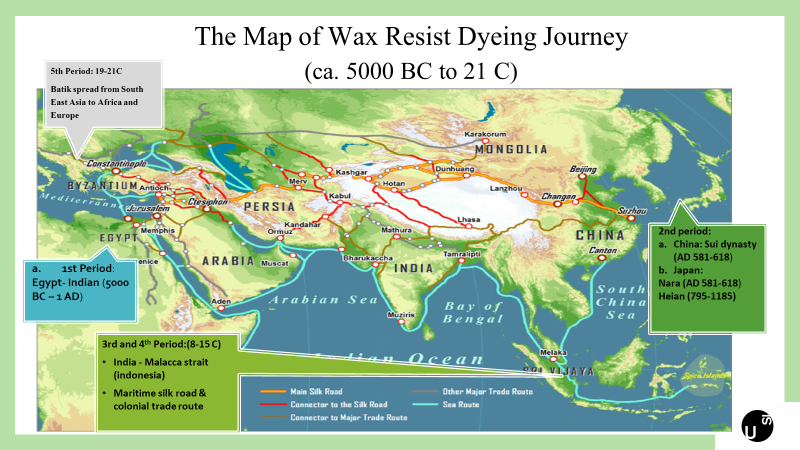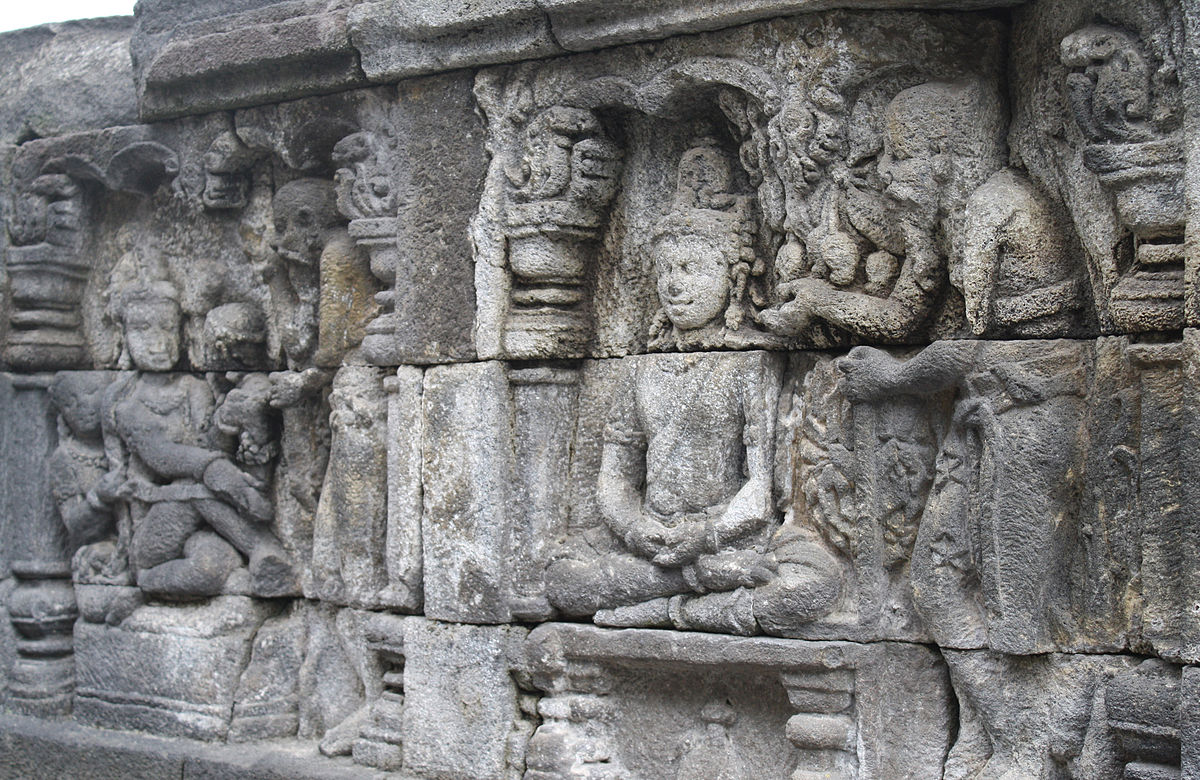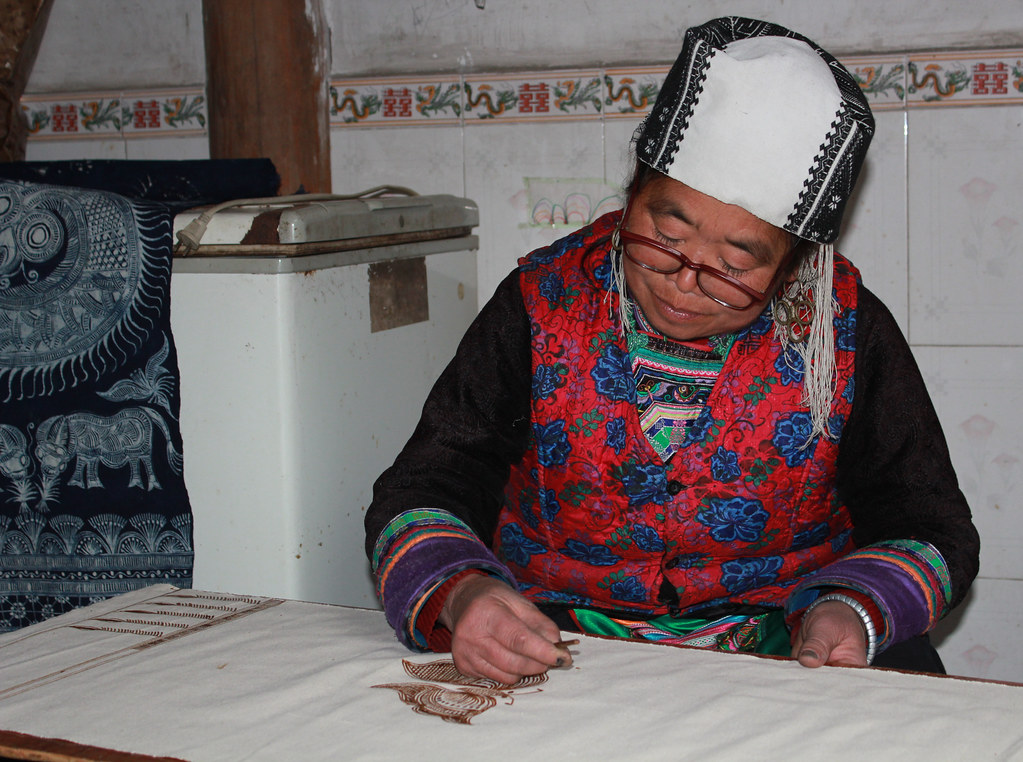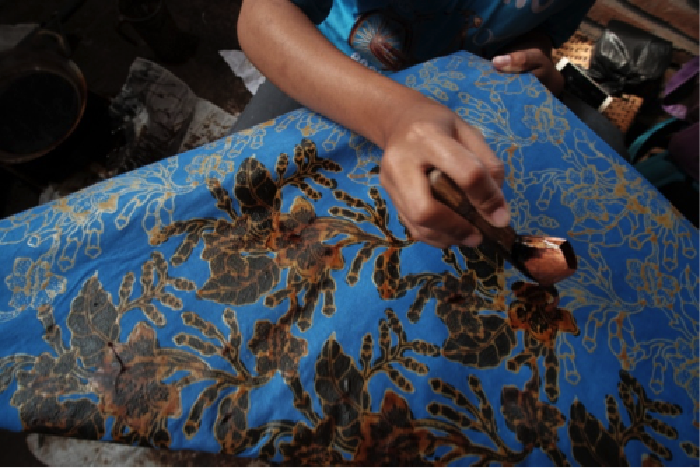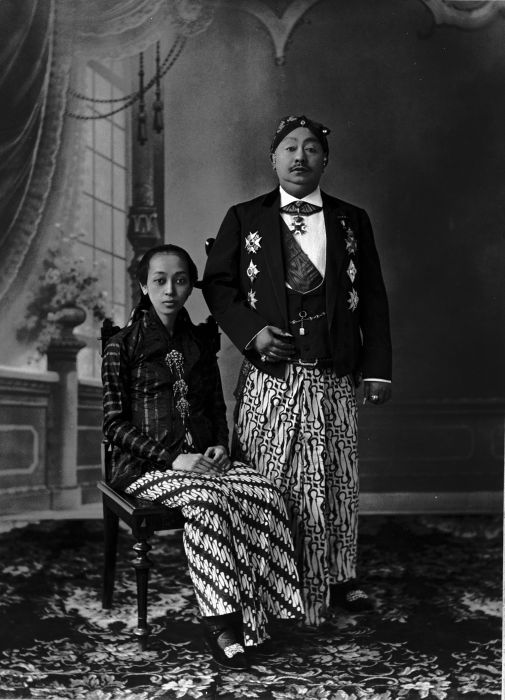Home / Indonesian Batik – History of Batik
The History of Indonesian Batik
Learn the Essence of Batik Intangible Cultural Heritage!
Photo: Puspita Ayu
The Journey of Wax Resist Dyeing Technique
Batik textile heritage permeates the life of Indonesian society since the 5th century. For many centuries, Batik has been used to depict the great journey of human life: birth, marriage, and death. The wax-resist dyeing technique that characterizes Batik as an intangible cultural heritage has already existed since 5000 BC.
Photo: Borobudur
First Phase :
The Oldest Batik
5000 BC – 5th Century
The wax resist-dyeing technique has been used in regions along the trade road between Egypt and India. A wax indigo cloth found in Pharaoh tomb dated 5 BC signified the use of wax in the textile production in ancient time. The oldest Batik textile dated since 5 Century in Indonesian archipelago was found in Toraja Regency in Sulawesi island. Some assumptions about how the wax-resist dyeing technique was transmitted from outside of Indonesian Archipelago remain in question. At this point, historians argue that certain regions around the world might have already developed their own textile production techniques, including the use of wax-resist dyeing technique.
Second Period:
The Asian Silk Road
5th – 8th Century
The second period started from 5C until 8 Century. Several archaeological findings of textiles showed that the wax-resist dyeing technique was also used in some areas in Asia, such as in China and Japan. In China, the use of wax-resist dyeing technique has been practised by artisans during the Han (221–206 BC) and Sui Dynasty (AD 581-618). Until today Chinese minority ethnics such as Miao, Bouyei and Gejia in Guizhou province are still using wax-resist dyeing to produce their traditional textiles. The wax-resist dyeing technique was massively adopted by ancient textile artisans during the Nara Period (710-785) and Heian Period (795-1185).
Wuji Lady, Miao tribe, China (photo: Arian Zwegers)
Third Period:
The Maritime Silk Road
8th – 15th Century
In 8 Century, the trade connection was built from Gujarat, India to Malacca Strait (now is the border between Indonesia and Malaysia). In this period, many royal kingdoms existed in Indonesian archipelago conducted textile trading with textile merchants from India, Arab and Gujarat.
The Batik denomination was created in Java island since 8C. In the book of Old Javanese Kakawin Ramayana (Hindu-Buddhist period of 870 AD), Batik is composed by the word “Tika”, which means sacred painting. Batik is also derived from Javanese words, “Amba” means wide, and “Titik” means (create) dots to form lines. Batik also has other meaning that refers to Javanese phrase: “Mbatik Manah”, which means to paint with whole heart.
Photo: News.Detik
Sultan Pakubuwana X, Surakarta Sultanate (Photo: Wikiwand)
Fourth Period:
Colonialism Era
15th – 19th Century
The emergence of Islamic kingdoms influences the conception of Batik motifs and its philosophical meanings. Certain Batik meanings that referred to Hindu/Buddhist religious value were re-adapted into Islamic religion. The essence of the traditional motif remained the same. However, the notion of religious values and the wearing rules were slightly changed corresponding to the social customs and social hierarchies in that era. During 18-20C, Batik and other type of wax resist-dyeing textile became a vital textile commodity to Africa and Europe during Dutch VOC (Vereenigde Oostindische Compagnie) era. Based on historical findings, historians assumed that Batik technique was also spread by European colonials to other parts of the world.
Since 16C, the Javanese word of “Batik” is used worldwide to indicate wax-resist dyeing technique in textile production
Fifth Period:
Global Cultural Practice
19th Century until present
The spread of Batik for centuries made it become a common cultural practice that weaves the relationship between countries in South East Asia (Indonesia, Thailand, Singapore, Malaysia, Vietnam, Philippines, Brunei, Myanmar (Burma), Cambodia, and Laos). Through Indonesian public participation, Batik was inscribed as UNESCO intangible cultural heritage of humanity in 2009. The inscription addressed to the authenticity and exceptional cultural values that are deeply embedded in Batik textile heritage. Those inherent exceptional values are
(i) Historical production technique,
(ii) Cultural expression and socio-cultural meanings embedded in Batik motifs
(iii) The special wearing rules, and
(iv) Strong characteristics of social empowerment in the batik tradition.
Today, the batik safeguarding practice is increasing nationally and becomes an inspiration to many textile craft artisans around the world. In 2015, Batik has become the core livelihood for 47,775 SMEs in Indonesia and 199,744 people who work as craftsmen, designers, tailors, etc.). The inscription of Batik as an UNESCO intangible cultural heritage in 2009 became a shared responsibility among national/international stakeholders in order to protect the extraordinary cultural elements inherent in this living heritage for future generations.
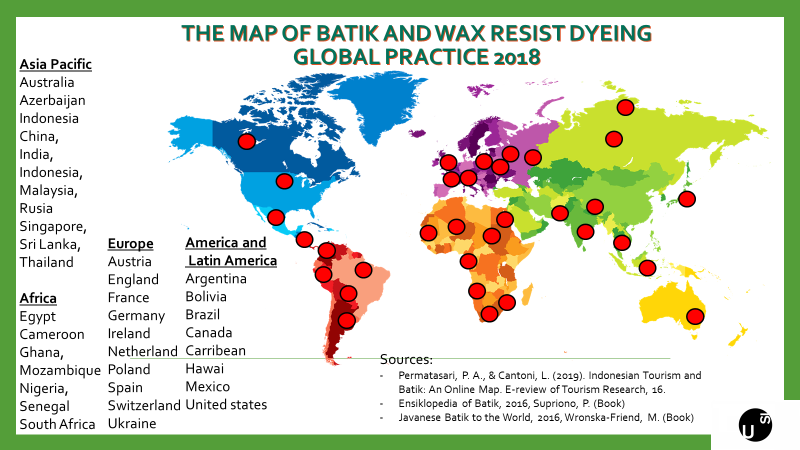
(Photo: Puspita Ayu Permatasari)
References
- Verlag, M. C. (2019). Indiennes material for a thousand stories. Swiss National Museum (ed.). ISBN 9783856168933. Idea Code 19448.
- Druding, S.C. (1982). Dye history from 2600BC to the 20th century. In: Bi-annual gathering of
Weavers, dyers, and spinners. Convergence. - Hitchcock, M. & Nuryanti, W. (2000). Building on Batik: The globalization of a craft community. Routledge, 236.
- Lestari, N.S. (2012). Serat Prawan Mbathik: Suatu kajian filosofi Jawa dalam proses membatik [Ancient manuscript of Serat Prawan Mbathik: an analysis of Javanese
philosophy in Batik making process]. In 5th International Conference on Indonesian Studies (ICSSIS).
University of Indonesia, Yogyakarta. - Permatasari, P. A., & Cantoni, L. (2019). Indonesian Tourism and Batik: An Online Map. E-review of Tourism Research, 16.
- Supriono, Y.P. (2017). Ensiklopedia The Heritage of Batik Identitas Pemersatu Kebanggaan Bangsa. [Encyclopedia of Batik heritage, the pride of Indonesian national identity] Andi: Yogyakarta.
- The Hindu magazine homepage. https://www.thehindu.com/thehindu/mag/2004/06/20/
stories/2004062000500700.htm. - Wronska-Friend, M. (2016). Batik Jawa Bagi Dunia/Javanese Batik to the World. Komunitas Lintas Budaya Indonesia/Indonesian Cross-Cultural Community.
- Yunus, U., & Tulasi, D. (2012). Batik Semiotics as a media of communication in Java. Cultura, 9(2), 143-150.

